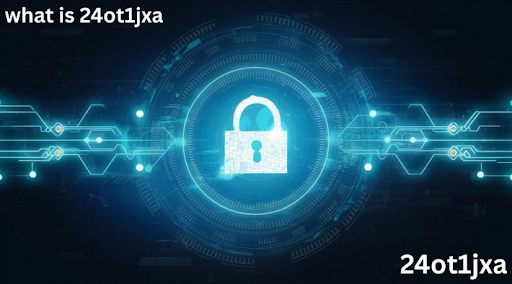In our increasingly digital world, cyber threats are becoming more sophisticated—and one of the latest to emerge is 24ot1jxa, a stealthy and dangerous form of spyware malware. If you’ve come across this odd string of characters and wondered what it means, you’re not alone. Despite its cryptic name, 24ot1jxa malware is a very real threat capable of hijacking personal data, disrupting systems, and even compromising entire networks.
This article breaks down what makes 24ot1jxa harmful, how it spreads, signs your device might be infected, and most importantly, how to protect yourself.
What Is 24ot1jxa Malware?
24ot1jxa is a type of spyware malware that quietly infiltrates devices to monitor activity and collect sensitive information. Unlike more overt types of malware, 24ot1jxa runs silently in the background, making it hard to detect until significant damage has already occurred.
It typically targets:
- Login credentials
- Financial data
- Personal files
- Organizational documents
Once it’s in, 24ot1jxa can act as a gateway for deeper system access, making your device and network highly vulnerable.
Why Is 24ot1jxa Harmful?
Understanding why 24ot1jxa is considered dangerous involves examining how it impacts your data, performance, and security.
1. Data Theft and Privacy Breaches
24ot1jxa specializes in harvesting sensitive personal and financial data. From banking logins to social media passwords, it exposes users to risks like identity theft, fraud, and unauthorized account access.
2. Severe System Slowdowns
Once installed, 24ot1jxa consumes system resources, causing your device to lag, freeze, or crash unexpectedly. This hampers productivity and makes everyday tasks frustrating.
3. Remote Access by Hackers
One of the most concerning aspects of 24ot1jxa is its ability to grant remote access to cybercriminals. This allows them to control your system, steal additional data, install more malware, or even spy on your activities.
4. Spreads Across Networks
If you’re part of a home or business network, an infected device can spread 24ot1jxa to other connected devices, risking widespread compromise.
How Does 24ot1jxa Infect Devices?
Knowing how 24ot1jxa enters your system is key to prevention.
Common Infection Methods:
- Phishing Emails: Fake emails with malicious links or attachments.
- Infected Downloads: Files from suspicious websites or torrents.
- External Devices: USB drives or portable storage connected to infected computers.
Phishing as a Primary Vector
Most infections start with a simple email. Cybercriminals impersonate trusted brands to trick users into clicking infected links or downloading malicious attachments. Once clicked, 24ot1jxa installs silently.
Unsafe Downloads and Devices
Free software from sketchy sources often contains hidden malware. Additionally, infected USB drives can spread 24ot1jxa across systems when plugged in, even bypassing some antivirus programs.
Warning Signs Your Device Is Infected
Detecting a 24ot1jxa infection early can reduce the damage.
1. Unusual System Behavior
Is your computer freezing, crashing, or acting erratically? Malware may be hijacking system processes.
2. Sluggish Performance
24ot1jxa uses CPU and memory resources in the background, slowing everything down—from app launches to basic tasks.
3. Unwanted Pop-ups
Persistent ads, strange tabs opening on their own, or software installing without your permission are all red flags.
How to Protect Yourself from 24ot1jxa
Prevention is your strongest weapon against this malware.
✅ Use Trusted Antivirus and Anti-Malware Tools
Install reputable security software such as:
- Malwarebytes
- Kaspersky Lab
- Norton Antivirus
- McAfee Total Protection
These tools provide real-time scanning and threat elimination.
✅ Keep Your System and Apps Updated
Regular updates patch known vulnerabilities that malware like 24ot1jxa exploits. Enable auto-updates for both your OS and third-party apps.
✅ Practice Email and Download Hygiene
- Avoid clicking links in emails from unknown senders.
- Don’t download attachments unless you’re sure of their source.
- Only install software from official websites or app stores.
✅ Scan External Devices Before Use
USB drives and other removable storage should be scanned before opening their contents, especially if they’ve been used on multiple machines.
How to Remove 24ot1jxa from Your Device
If you suspect an infection, act immediately to limit the damage.
Option 1: Manual Removal (Advanced Users Only)
- Use Task Manager (Windows) or Activity Monitor (macOS) to identify suspicious processes.
- Boot into Safe Mode and manually delete malicious files.
Manual removal is risky and not recommended for casual users.
Option 2: Use Malware Removal Tools
The safest route is to run a full scan with a dedicated removal tool such as:
- Malwarebytes Anti-Malware
- Kaspersky Internet Security
- Norton Power Eraser
These programs are designed to detect, quarantine, and eliminate malware like 24ot1jxa without harming system files.
Final Thoughts
The question isn’t just “Why is 24ot1jxa harmful?”—it’s how much risk are you willing to take before securing your system?
This malware poses serious threats to your privacy, performance, and peace of mind. From data breaches to network-wide infections, the impact can be devastating if left unchecked.
By staying vigilant and implementing strong digital hygiene practices, you can significantly reduce your exposure to 24ot1jxa and other malware threats.
Clearing Up Confusion: FAQs
Why is 24ot1jxa harmful to my device?
Because it steals data, slows down your system, enables unauthorized access, and spreads to other devices.
How can I detect if my device is infected with 24ot1jxa?
Watch for strange behavior—like system lags, pop-ups, and unrecognized activity. Run a full system scan to confirm.
What’s the best way to remove 24ot1jxa?
Use trusted tools like Malwarebytes, Norton, or Kaspersky to perform a complete malware scan and removal.
Can 24ot1jxa spread to other devices?
Yes, especially across shared networks or via infected USB drives.
How do I prevent 24ot1jxa infection?
Install antivirus software, keep your system updated, avoid suspicious emails/links, and scan external devices before use.
Keep an eye for more news & updates on Polands!
